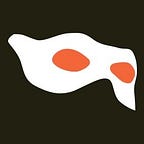World Scratch Day 2017 — Coding for Kids, Ten Years On
Happy Birthday Scratch! World Scratch Day is extra special this year as it’s ten years since our favourite kids’ coding language Scratch was launched. The team at MIT Media Lab have gone on to create an online community of over 18 million registered users, curious about coding and creating games, animations, fan fiction, tutorials, quizzes, joyful silliness, jokes and tributes.
Scratch revolutionized educational programming. Children can use Scratch to create bright, colourful animated projects with any character they want, as complex or simple as they choose. It’s a sandbox environment, meaning there’s no set structure to a project, and you start with a blank page.
Scratch allows children to apply coding skills to any area of interest to them — it’s an early example of embedding computer science in other learning areas — an idea known as CS + X — where X can be other sciences, humanities, the arts — children can use Scratch to create their history project, a quiz about poetry, or a holiday slideshow.
Scratch is also instantly appealing as it uses ‘drag and drop’ coding, with no need to type. By removing the need to type, syntax errors disappear, and the focus becomes creating a logical set of instructions, rather than hunting for a missing semicolon.
The rate of technological change is ever increasing, and it’s worth pausing to think about our world in May 2007, when Scratch was first released.
We used computers at home or the office, probably wired to a network.
Catching up on email on the bus certainly wasn’t common, with the first iPhone rolling out in June 2007. Mobile broadband rarely existed, conversations about the cloud were probably to do with weather not computing, and home wifi was a recent development.
A status update required an ad in the classifieds.
Facebook was young, with 20 million users globally. If you wanted to be sure the world knew about your wedding day, the safest bet was a classified ad and a handwritten note to grandma. We lived in a pre-likes world, where we could look at a photo and decide if it was good or not based on our own opinion, not the number of likes it got. Scratch has embraced our online, social world by moving from an software download to a website, where creations are shared, remixed and commented on. This keeps it relevant and creates an amazing community of creators and coders.
We waited a week between episodes.
Crazy, I know, but if you were left hanging at the end of an episode of How I Met Your Mother, it was a long week until you knew what happened next. Netflix started its life shipping dvd rentals, and 2007 was the year streaming entertainment became an option.
We had a diversity issue in tech.
Women and minorities were underrepresented at universities and professionally. Sadly, we’ve not fixed this issue yet. But so many amazing organizations work around the clock to support the study of computer science by girls and women in particular. Mentoring networks at least allow girls to dream of ‘being what they can see’.
The pipeline of graduates was shrinking.
There wasn’t a strong pipeline of students studying computer science. In many countries enrolments in university computer science degrees were falling, while industry was desperate for suitably skilled graduates. In Australia the nadir of computer science enrolments was around 2008. Similar to the diversity issue, there’s no quick fix but we are now seeing an upward trend in university enrolments.
It was hard to know where to start if you wanted to teach coding.
Tools to teach coding have come so far so fast we’re now absolutely spoilt for choice, with Scratch sitting beside code.org, robotics and too many other resources to name. Children can learn not only coding, but computational thinking in a way that’s engaging and relevant to them. We’re now seeing coding enter our school curriculums are our children are learning to solve the world’s’ problems with tech.
There are so many encouraging signs ten years on. Scratch has changed how children, teachers, and parents think about coding. It’s given so many children a way of expressing themselves and sparked a lifelong interest in coding and computational thinking.
Educational thinking powerhouse and founder of the MIT Media Lab Seymour Parpert put it perfectly when he said “I am convinced that the best learning takes place when the learner takes charge.”
Happy Birthday Scratch! Thanks to all those involved in its creation and evolution. You’ve changed our classrooms for the better.
